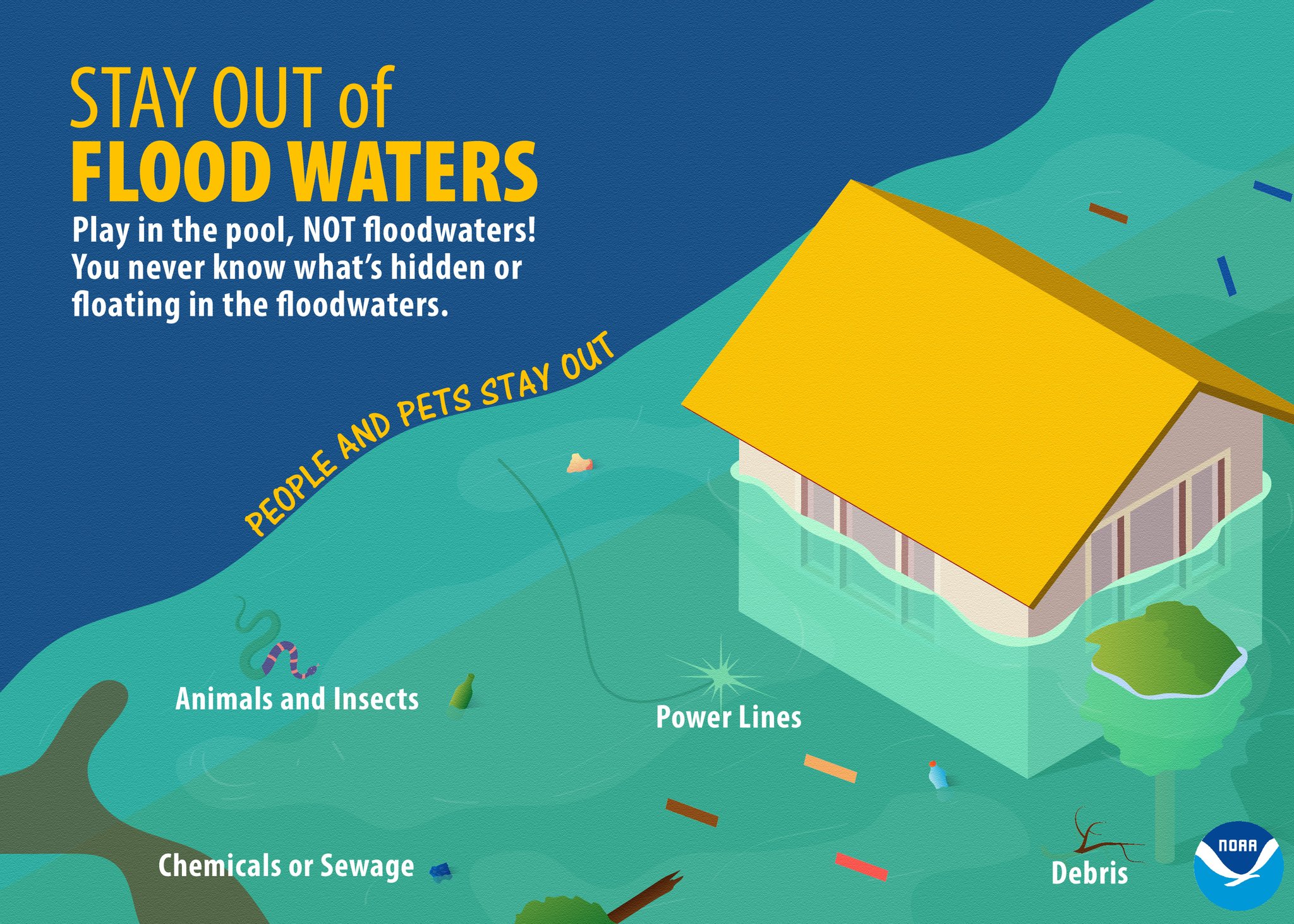Flash Flood Warning: What You Need To Know About Potential Flood Alerts And Safety

Table of Contents
Understanding Flash Flood Warnings and Alerts
Knowing the difference between various flood alerts is crucial for taking appropriate action. Failing to understand the severity of a situation can have life-threatening consequences.
Different Types of Flood Warnings
The terminology surrounding flood alerts can be confusing, but understanding the nuances can save lives. Here's a breakdown:
- Flash Flood Watch: This indicates conditions are favorable for flash flooding to develop. Stay informed and be prepared to act quickly if conditions worsen.
- Flash Flood Warning: This is a serious alert! Flash flooding is imminent or occurring. Take immediate action to protect yourself and your property. Evacuation may be necessary.
- Flash Flood Advisory: Flash flooding is possible. While not as urgent as a warning, it's still important to monitor the situation and be prepared for potential flooding.
These alerts are disseminated through various channels, including the National Weather Service website and app, NOAA weather radio, local news broadcasts, and emergency alert systems on smartphones. Ensure you have multiple ways of receiving these critical notifications.
Identifying Areas Prone to Flash Floods
Certain geographic features and conditions significantly increase the risk of flash flooding. Being aware of these factors allows for better preparedness and informed decision-making.
- Mountainous Terrain: Steep slopes rapidly channel rainfall into lower-lying areas, leading to a swift buildup of water.
- Areas with Poor Drainage: Ground that can't absorb water quickly leads to surface runoff, increasing flood risk. This includes areas with compacted soil or significant development.
- Dried-up Riverbeds: These seemingly innocuous areas can fill rapidly during heavy rainfall, creating dangerous and unpredictable flash floods.
- Urban Areas with Inadequate Drainage Systems: Cities with insufficient storm drains and drainage infrastructure are highly vulnerable to flash flooding, especially during intense rainfall events.
Safety Measures During a Flash Flood Warning
When a flash flood warning is issued, immediate action is critical. Delaying response can be fatal.
Immediate Actions to Take
- Move to Higher Ground Immediately: This is your top priority. Get to the highest point you can safely reach, preferably a designated evacuation center.
- Avoid Driving or Walking Through Floodwaters: Floodwaters can be deceptively deep and swift, concealing hazards like downed power lines, debris, and strong currents. Even a few inches of water can knock you off your feet.
- Turn Off Utilities: Disconnect electricity, gas, and water to prevent further damage and electrical hazards.
- Secure Valuable Items: If time permits, move valuables to higher ground or secure them to prevent loss.
Preparing for Flash Floods
Proactive preparation is essential to mitigate the impact of a flash flood.
- Develop a Family Evacuation Plan: Designate meeting points and establish communication protocols. Practice your plan regularly.
- Create a Go-Bag with Essential Supplies: Pack water, non-perishable food, first-aid kit, medications, important documents, flashlights, batteries, and a portable radio.
- Know Your Evacuation Routes: Identify several escape routes and be familiar with alternate paths in case primary routes are blocked.
- Sign Up for Emergency Alerts: Register for local emergency alerts through your municipality's website or emergency management agency.
Post-Flash Flood Actions and Recovery
Even after the floodwaters recede, significant dangers remain. Safety precautions must continue.
Assessing Damage and Seeking Help
- Avoid Floodwaters Until They Recede Completely: Floodwaters can remain contaminated with hazardous materials long after they appear to have cleared.
- Check for Structural Damage: Inspect your home or business for any structural damage, paying close attention to electrical wiring and gas lines. Do not enter a damaged building unless it's deemed safe by professionals.
- Contact Insurance: Report flood damage to your insurance company as soon as possible to begin the claims process.
- Report Damages to Authorities: Notify local authorities about damaged infrastructure or any other issues requiring attention.
Cleaning Up Safely After a Flash Flood
Cleaning up after a flash flood requires careful attention to safety to prevent further injury or health problems.
- Wear Protective Gear: Always use gloves, boots, and masks when cleaning up to protect against contaminated water, sharp objects, and hazardous materials.
- Be Aware of Potential Hazards: Check for downed power lines, sharp debris, and unstable structures. Avoid contact with contaminated water.
- Dispose of Waste Properly: Follow your local guidelines for disposing of flood-damaged materials.
- Disinfect Affected Areas: Use appropriate disinfectants to clean and sanitize affected areas and prevent mold growth.
Conclusion
Understanding flash flood warnings and taking proactive steps to ensure safety are crucial to mitigating the devastating effects of flash flooding. By knowing the different alert levels, identifying high-risk areas, taking immediate action during a warning, and following safe cleanup procedures, you can significantly reduce your risk and protect your family. Be prepared for flash floods by staying informed about potential severe weather in your area, developing a comprehensive evacuation plan, and regularly practicing your emergency preparedness strategies. Visit your local National Weather Service office or emergency management agency website for more information and resources on how to stay safe during flash floods and understand flash flood alerts. Remember, preparedness is key to surviving a flash flood.

Featured Posts
-
 Moto Gp Inggris 2025 Jadwal Lengkap Siaran Langsung Trans7 And Spotv Dan Klasemen
May 26, 2025
Moto Gp Inggris 2025 Jadwal Lengkap Siaran Langsung Trans7 And Spotv Dan Klasemen
May 26, 2025 -
 55 Richchya Naomi Kempbell Foto Zi Svyata
May 26, 2025
55 Richchya Naomi Kempbell Foto Zi Svyata
May 26, 2025 -
 Naomi Kempbell Vrazhayucha Poyava U Biliy Tunitsi Na Shou Biznes Zakhodi V Londoni
May 26, 2025
Naomi Kempbell Vrazhayucha Poyava U Biliy Tunitsi Na Shou Biznes Zakhodi V Londoni
May 26, 2025 -
 Is Neuers Injury A Major Blow For Bayern Munich
May 26, 2025
Is Neuers Injury A Major Blow For Bayern Munich
May 26, 2025 -
 Craig Mc Ilquham Hells Angels Member To Be Remembered At Sundays Memorial Service
May 26, 2025
Craig Mc Ilquham Hells Angels Member To Be Remembered At Sundays Memorial Service
May 26, 2025
